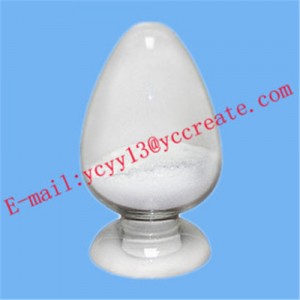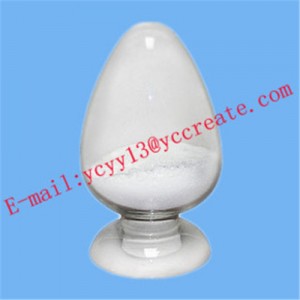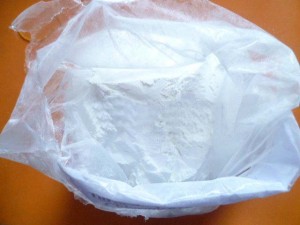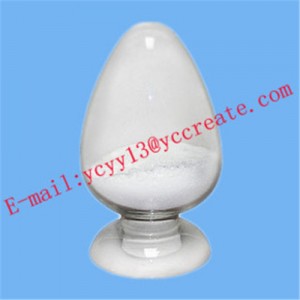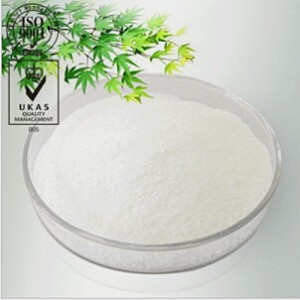Hot Selling Microcrystalline Cellulose CAS:9004-34-6
Basic Info.
Synonyms: Microcrystalline Cellulose
Model NO.: OAP-024
CAS: 9004-34-6
Einecs: 232-674-9
MW: 2.01588
Customized: Non-Customized
Suitable for: All
Purity: >99%
Appearance: White Powder
Catagory: Pharmaceutial Raw Material
Trademark: CQSP
HS Code: 3001909099
Certification: ISO 9001,,USP,BP,GMP
Grade: Pharmaceutial Grade
Transport Package: 20kgs/Drum or as your inquiry
Origin: China
Reference FOB Price:$3/kg
MOQ:1kg
Port:Shenzhen/Shanghai,China
Production Capacity:5000kg/month
Shipping: DHL, EMS, FedEx, UPS
Payment: Western Union, Moneygram, T/T, Bitcoin
Delivery time: Parcel can be sent out within 24hours after your payment, 4~7 days to arrive.
Description:
Microcrystalline Cellulose is hardly a new product. As a naturally occurring substance, it has proven to be stable, safe and physiologically inert.As the name implies, Microcrystalline Cellulose is basically cellulose and is derived from high quality wood pulp. While cellulose is the most abundant organic material, Microcrystalline Cellulose can only be derived from a special grade of alpha cellulose.Microcrystalline Cellulose revolutionised tableting because of its unique compressibility and carrying capacity. It exhibits excellent properties as an excipient for solid dosage forms. It compacts well under minimum compression pressures, has high binding capability, and creates tablets that are extremely hard, stable, yet disintegrate rapidly. Other advantages include low friability, inherent lubricity, and the highest dilution potential of all binders. These properties make Microcrystalline Cellulose particularly valuable as a filler and binder for formulations prepared by direct compression, though it also is used in wet or dry granulation and for spheronisation/pelletisation.
In many ways, Cellulose makes the ideal excipient. A naturally occurring polymer, it is comprised of glucose units connected by a 1-4 beta glycosidic bond. These linear cellulose chains are bundled together as microfibril spiralled together in the walls of plant cell. Each microfibril exhibits a high degree of three-dimensional internal bonding resulting in a crystalline structure that is insoluble in water and resistant to reagents. There are, however, relatively weak segments of the microfibril with weaker internal bonding. These are called amorphous regions but are more accurately called dislocations since microfibril containing single-phase structure. The crystalline region is isolated to produce Microcrystalline Cellulose.
Presently, three types of Sancel are produced Sancel 101, Sancel 102 & Sancel 112. Each corresponds to 50 micron, 90 micron and low moisture, respectively. SANCEL is purified partially depolymerized ALPHA CELLULOSE. It is White, Odorless, Tasteless, free from organic and inorganic contaminations. It is insoluble in Water, Dilute Acids, and in mostly all organic solvents. Practically insoluble in Sodium Hydroxide solution. SANCEL, which has now become a synonymous name in pharmaceutical industries, is a must for quality as well as quantity products. The different grades are produced during final stages of the Sancel manufacturing process by altering the spray drying conditions.
Rapid drying produces aggregates of microcrystals with many dislocations and slip planes that can fracture and realign during tableting. This deformation is primarily plastic, so bonds formed under pressure remain formed after pressure is released, making for a strong, dense tablet with no capping. Microcrystalline Cellulose also is highly absorptive due to the capillary action of its surface porosity, making it possible to act as a carrier for liquids and yet retain free flowing and compression properties. Its porosity promotes easy wetting and rapid drying of wet granulation and exhibits good volumetric flow characteristic with low lubricant demand.
In the Pharmaceutical Industry
Microcrystalline Cellulose (MCC) is often used as adsorbents, suspending agents, diluents and disintegrating agents. MCC is widely used in the pharmaceutical preparation, mainly as diluents and adhesives in oral tablets and capsules. It can be used for wet granulation as well as direct compression by dry method. It has some lubrication and disintegration action so is very useful in tablet preparation.
 English
English Español
Español Русский
Русский עברית
עברית Français
Français












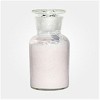
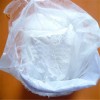
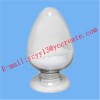
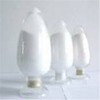



 Product quality protection
Product quality protection 